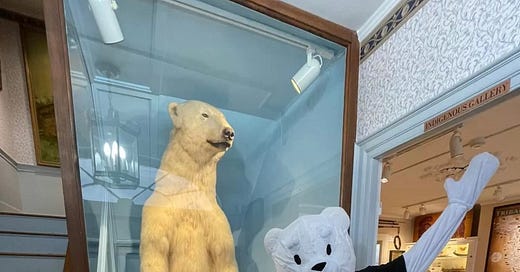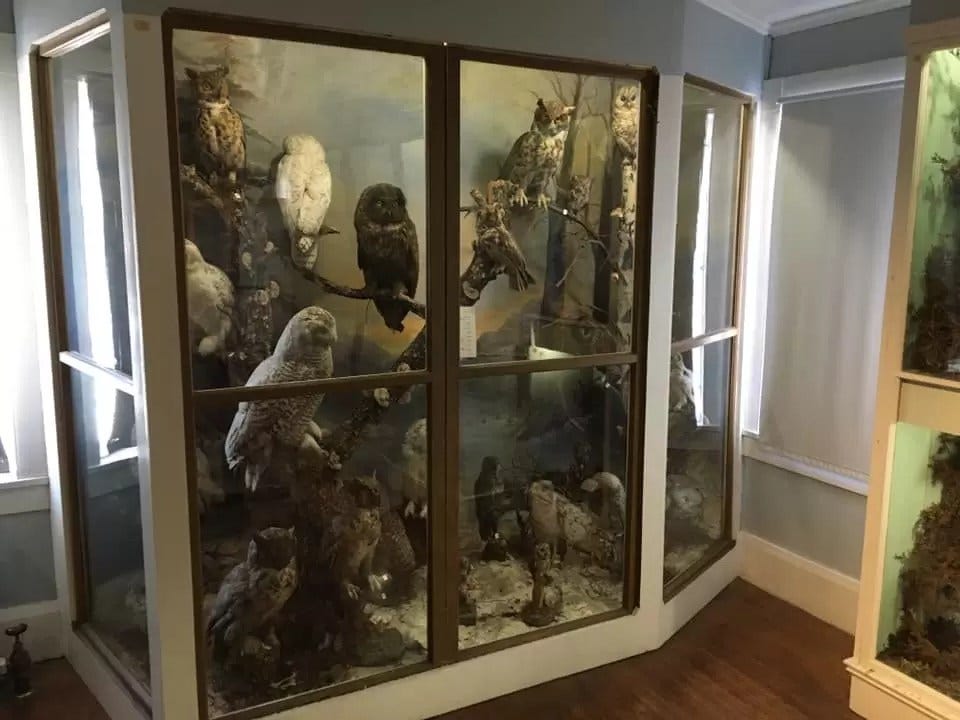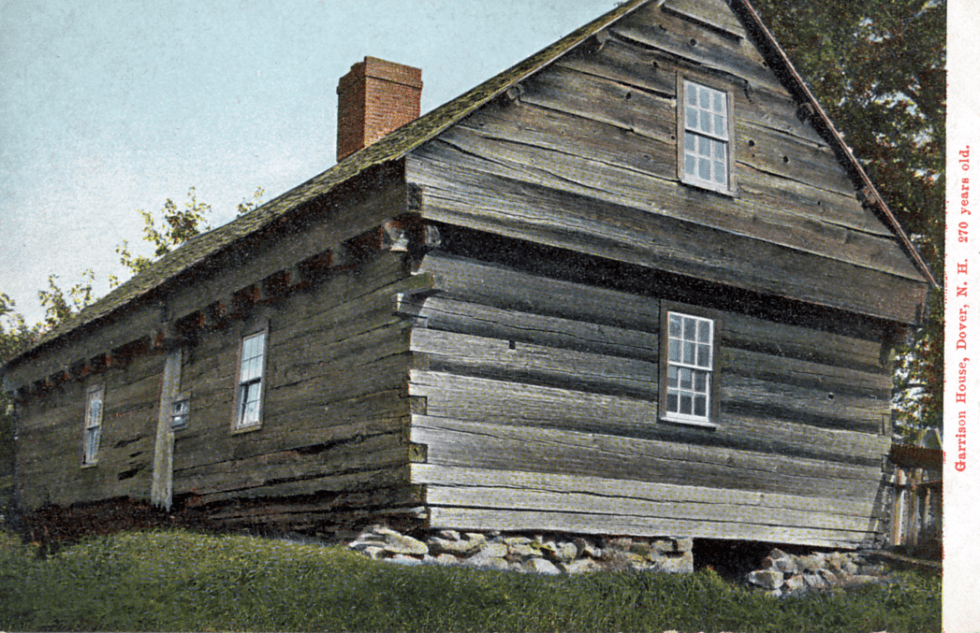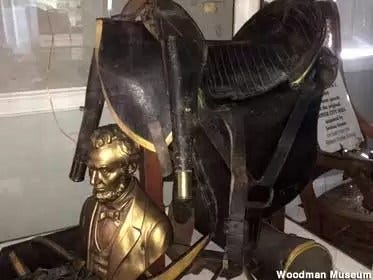Originally posted on December 27, 2024 at SteveBargdill.com
Third graders for generations have shuffled through the Woodman Museum doors, wide-eyed and chattering, to stand in front of Nanuq—a10-foot-tall, 1,500-pound taxidermized polar bear shot near Nome, Alaska in 1962 by Dr. Francis Moran Sr and mounted for a mere fifty dollars. These school field trips, they’re a shared memory, a cornerstone of a Dover childhood.
Discovering the Woodman Museum later in life often comes with a mix of surprise and bewilderment. A whole room of taxidermy birds stares back with glassy eyes, while jars of preserved snakes sit alongside glow-in-the-dark stones and delicately pinned insects. For many, the experience offers a strange sense of disorientation.
For those who haven’t visited since their third-grade field trip, the Woodman Museum feels like a memory that has quietly grown in unexpected ways. Nanuq still stands sentinel in the entryway. Yet alongside the familiar are new additions: exhibits that reflect Dover’s evolving story, like galleries dedicated to the town’s industrial heritage or the town’s role in international pop culture.
And like so many Dover natives, Woodman Museum Director Jon Nichols’ relationship with the museum began with that quintessential third-grade field trip. “I came here as a kid for my third-grade tour, just like everyone else in town—a tradition,” he shared. Years later, after serving in the military and earning a history degree, John found himself drawn back to Woodman, this time as a volunteer. “I knew jobs in history were few and far between, so I figured I’d start by reconnecting with a place I already loved,” he explained.
Over the years, John worked his way through nearly every role at the museum—from part-time staffer to board member—before stepping into the director’s chair in 2022. “When I started volunteering here back in 2018, there were literal days where I was sitting in the gift shop, and we might have one person, maybe no one, come in. But now, we’re averaging 50 to 60 people a day. We’re rebuilding and doubling pre-pandemic levels of attendance, which is exciting. My stepping-stone goal is to reach 10,000 visitors annually—something that hasn’t been achieved since the 1970s.” For Jon, the museum isn’t just a job—it’s a reflection of the town he calls a home, where history isn’t just preserved in exhibits like the bird gallery that remain frozen in time, but constantly evolving alongside newer, more interactive additions.
“There are exhibits that haven’t really changed since the first time I came here in the mid-90s,” Jon said. “I mean, they’ve been updated, but they still kind of look the same. Some of that is intentional—like the bird gallery upstairs. The backdrops look old because they are old. They were made by the first curator Colonel Daniel Hall and his wife Sophia Dodge Hall, who was the artist. She created the backdrops, and he taxidermized the items. The exhibit itself is historic, so we want to keep that the way it is while finding ways to incorporate modern elements into other galleries.” For John, the museum strikes a careful balance: it preserves its quirks and history while continuing to evolve for new generations.
The Woodman Museum’s mission strives to “advance and develop passion for history, nature, and the arts,” preserving the artifacts and stories that connect the Dover community to not only its own history but to the wider, modern 21st Century world.
This mission is rooted in the vision of Annie E. Woodman, the sharp-minded Dover native who turned an inheritance into a cultural cornerstone. Woodman left $100,000 in 1915 to establish the museum.
Originally planned as a single building, the trustees, led by Colonel Daniel Hall quickly found themselves in a bind. Building a new museum from scratch would devour the funds, leaving nothing for maintenance. Enter the Hale and Christie houses, two vacant colonial-style mansions with just the right air of grandeur—and a hint of scandal. The Hale House had belonged to John Parker Hale, an abolitionist senator and friend of Lincoln. Hale’s political reputation was sterling, but his daughter, Lucy Lambert Hale, became tabloid-worthy figure thanks to her secret engagement to John Wilkes Booth. When Booth was killed, Lucy’s photograph was found on his body—a dramatic postscript to an otherwise stoic family legacy.
Even before the museum officially opened in 1916, another relic of Dover’s history fell into place: the 1675 Damm Garrison House. This colonial-era stronghold, donated by Ellen Rounds, was moved three miles to the museum grounds, where it became a centerpiece of early American history. The house was originally built during a time of escalating tensions between European settlers and Indigenous tribes, driven in part by settler encroachment on Native lands and resources. These tensions came to a head on a fateful summer night in 1689.
Major Richard Waldron had betrayed the Pennacook, tricking them into a gathering under the guise of peace only to seize and enslave them. Chief Kancamagus stood in the shadows of the Cochecho settlement. Torches lit the sky as warriors descended on the garrisons, breaking through fortified walls, setting fires, and reclaiming what had been taken from them. The garrison house stands today as a stark reminder of the profound consequences of colonial expansion and the deep scars left upon Indigenous communities.
Fast forward a 190 years later to the morning of March 26, 1865 as President Abraham Lincoln rode slowly along the lines of the Army of the James, towering atop a bay horse, the reins loose in his hands. And to his side rode Colonel Daniel Hall, a seasoned aide-de-camp who had weathered the battles of Antietam, Fredericksburg, Chancellorsville, and Gettysburg. This was Lincoln’s last review, only twenty days before his assassination by John Wilkes Booth. How Hall came into possession of President Lincoln’s saddle remain unclear, but when Hall passed in 1920, he donated Lincoln’s saddle to the Woodman.
These acquisitions set the tone for the museum: a collection that blended high-minded ideals of education with the raw, sometimes messy history of Dover and the nation.
Partnerships with local institutions like the University of New Hampshire further this mission, blending academic research with community heritage. One recent collaboration resulted in the exhibit Combing History: Flax and Linen in New Hampshire, developed as part of a graduate student’s thesis project in the Museum Studies program at UNH.
The exhibit takes visitors on a journey through the process of growing flax and transforming it into linen, emphasizing the timeless sustainability of this versatile textile. Community involvement plays a vital role, with contributions from local historical organizations like the Stratham Historical Society, Newmarket Historical Society, and Moffatt-Ladd House, as well as artifacts from the private collections of prominent historians. Accompanying videos and text panels delve into the seasonality of flax cultivation, the labor-intensive steps to produce linen, and the social bonds that grew out of these shared efforts. Excerpts from diaries, account books, and daybooks offer a glimpse into the lives of New Hampshire families who depended on flax production, painting a vivid picture of community and resilience.
But the Woodman is not bound by the traditional limits of history. Enter the Teenage Mutant Ninja Turtles. What began as a black and white local comic book created by Kevin Eastman and Peter Laird has since exploded. “It’s taken 40 years for Dover to really highlight that the Ninja Turtles were created here,” Jon said. “This is the 40th anniversary of a franchise that’s grown into a billion-dollar phenomenon—not just in the region or the country, but across the entire world. I mean, you’ve got Michael Bay making blockbuster movies about them. It’s insane. We’re the birthplace of the Ninja Turtles, and I hope Dover, as a city, starts leaning into that a bit more.”
The museum’s Teenage Mutant Ninja Turtles exhibit is unlike anything else in its collection, an interactive and colorful gallery that captures the essence of a comic book come to life. Bright murals by local artist Danny Clark feature Dover landmarks like City Hall, the Cocheco Mills, and the Dover Street House, cleverly integrated with the iconic Turtles. Observant visitors might even spot subtle details, like the constellation of Leo above Leonardo.
A set of five rare bronze statues—depicting the four Turtles and Master Splinter—takes center stage. This display is part of an extremely rare duo: one set resides at UMass Amherst, donated by co-creator Laird, while the Woodman set originates from Kevin Eastman himself. Panels in the gallery highlight the Turtles’ international reach, including their rebranding as “Teenage Mutant Hero Turtles” in the UK due to marketing restrictions on martial arts. A dedicated space for fan art ensures the exhibit remains dynamic, inviting community members to contribute their own creations.
The Ninja Turtles gallery is more than just an homage to Dover’s pop culture legacy though. The exhibit is a model for the future of the museum. “I’ve got some background as a museum experience manager at the Children’s Museum, so my goal here is to bring some of those active, hands-on elements into other galleries,” Jon said. “The Ninja Turtles gallery is really immersive—it’s interactive, it’s colorful, and it’s meant to engage people of all ages. I think we can take that energy and bring it to more of the museum’s exhibits.”
This vision reflects a shift in how history can be presented—not just as something to observe, but as something to step into. “We want to give people more than something to look at,” Jon added. “We want them to feel like they’re stepping into history, into the stories. Whether it’s through video, tactile experiences, or immersive environments, it’s about making the museum more alive.”
Keeping the museum alive requires more than interactive exhibits though. “The newest building we have is 200 years old, and the oldest one is almost 400 years old,” Jon explained. “So there is preservation that has to go into each.”
Recent challenges have underscored the urgency of these efforts. A boiler failure in the Woodman House forced the museum to close early this season. Beyond the boiler, the museum faces a litany of needs. “We’re still using steam radiators in the Woodman House,” Jon said. “Those could get updated.”
Progress is already underway on some of these essential updates. In the Hale House, Operations Director Mike Day has been overseeing the installation of an ADA-accessible restroom. “Over the last few weeks, the walls have been patched and primed, new drywall has been installed, and the new closet has been framed out,” the museum shared in a recent Facebook update. This long-overdue addition has been made possible by the generosity of donors, highlighting the vital role community support plays in keeping the museum accessible and welcoming.
The museum’s renovation plans include a comprehensive fundraising campaign, made possible in part by a significant donation. “We have recently come into a large donation that’s going to pretty much accomplish the majority of the work for one of the houses,” Jon shared. “But there are still three more houses that need work from there.”
These updates reflect a careful balance between modern functionality and historical preservation. “Three out of four of our buildings are on the historical register,” Jon noted. “For historic homes, we have to keep them preserved.” From repairing the auxiliary woodwork to modernizing HVAC systems, the renovations aim to honor the museum’s past while securing its future.
A crucial part of securing that future lies in John’s goal of attracting 10,000 visitors annually. Achieving this target requires more than just updating exhibits and completing renovations; it hinges on ensuring the museum is visible. “There are still people in town who have lived here for 30 or 40 years and have never visited,” Jon said. “Some have driven past and wondered what the Woodman was but never come in. And there are people who’ve said, ‘Oh yeah, I’ve heard of that place, but I didn’t know what was in there.’ We’ve been working hard to change that, to let people know this is a resource right here in town—an attraction they can visit.”
“We’re doing more to get out into the community,” Jon explained. “So we’ve started participating in events like Apple Harvest Day and the Children’s Museum Maker Fair, as well as organizing our own community events. It’s all part of making the museum more visible and accessible.”
Through these efforts, the Woodman is redefining what it means to be a local museum. It’s not just a collection of artifacts, but a living, breathing part of the community. It’s where Dover’s history meets its future, blending timeless stories with modern experiences. As the museum continues to evolve, it’s carving out a space where every visitor can find a connection—whether through the majesty of Nanuq, the ingenuity of flax spinning, or the unexpected thrill of a Ninja Turtle gallery. The museum is never what is expected, but somehow is exactly what makes the Woodman unforgettable.
A previous version of this essay misspelled Jon’s first name.










